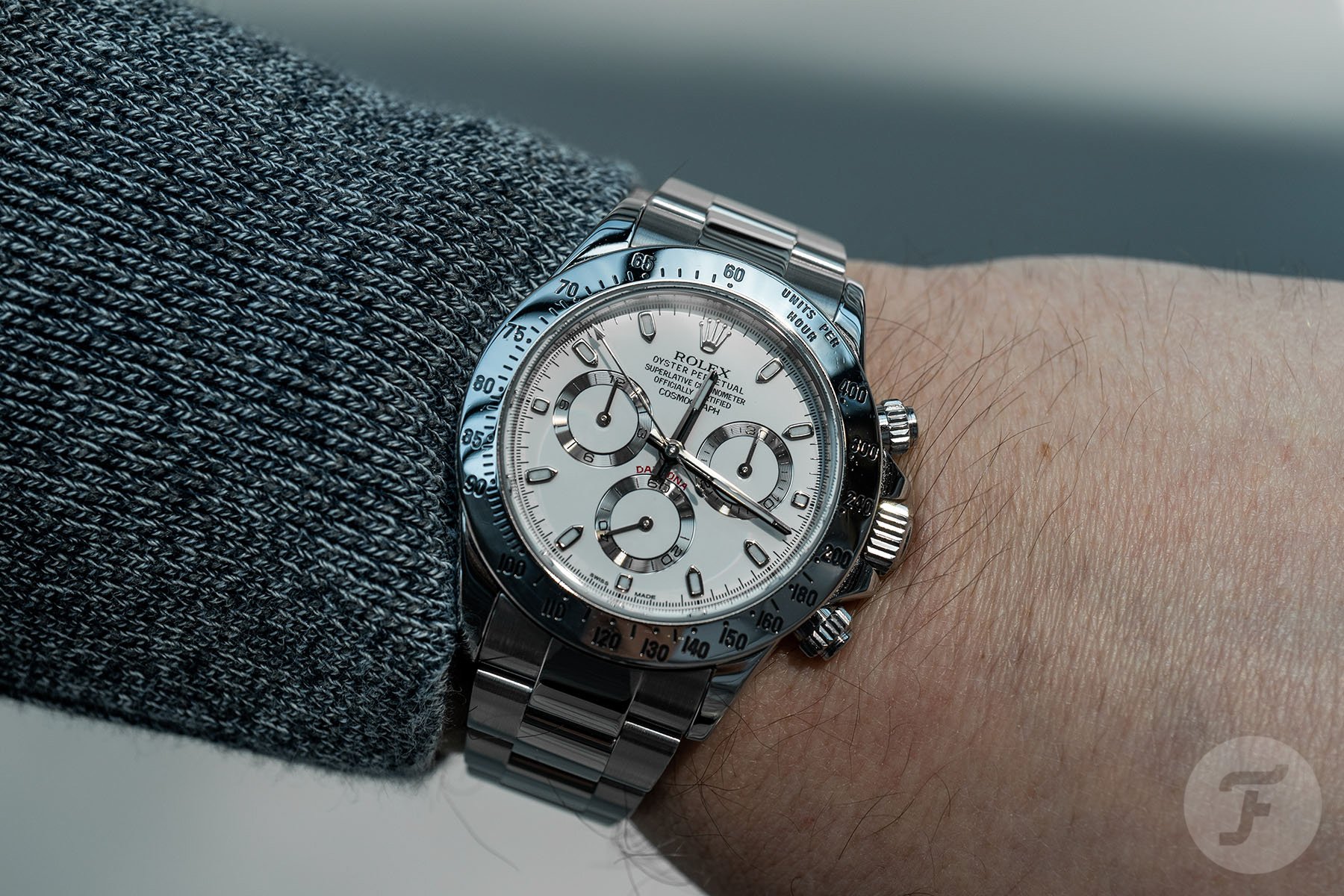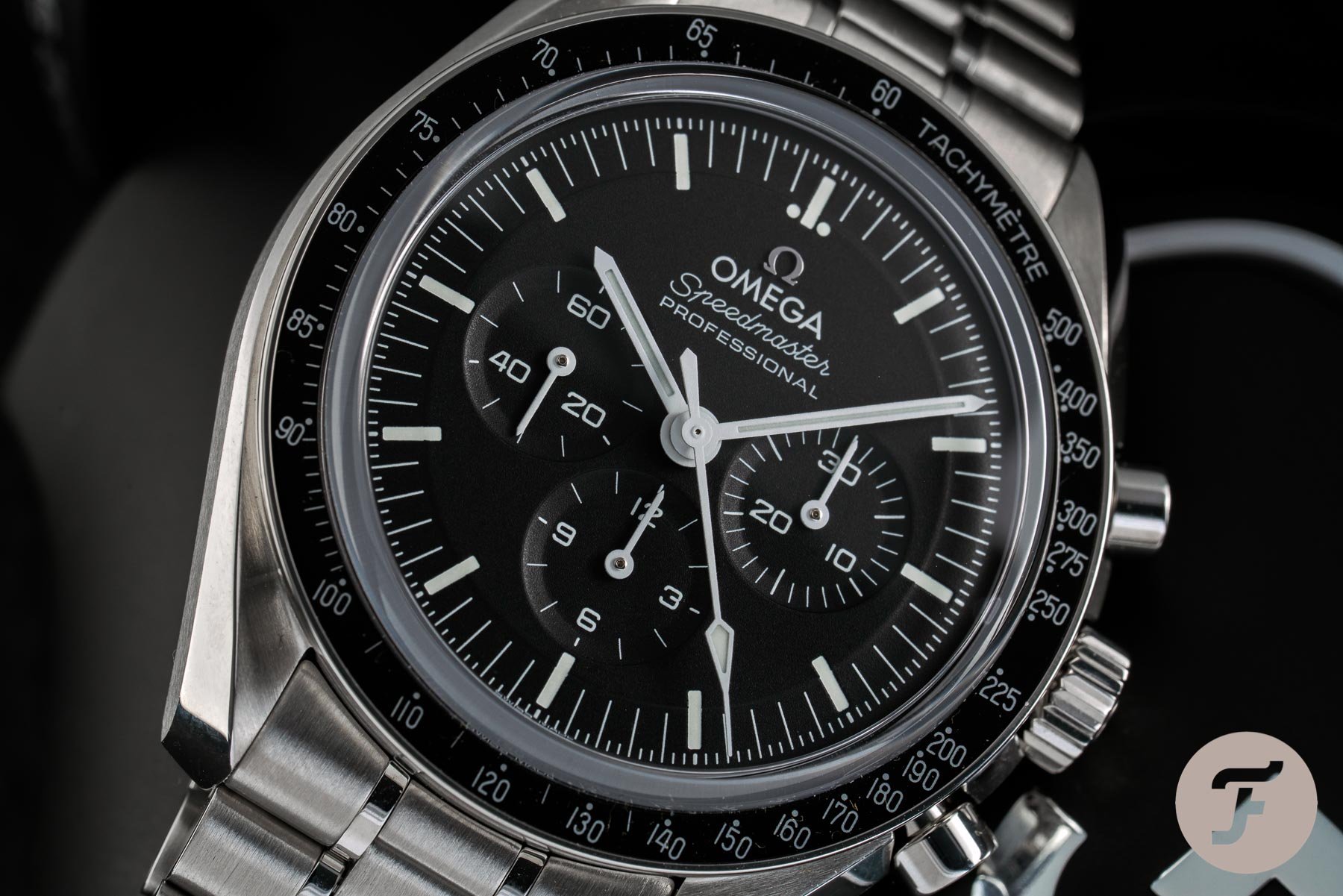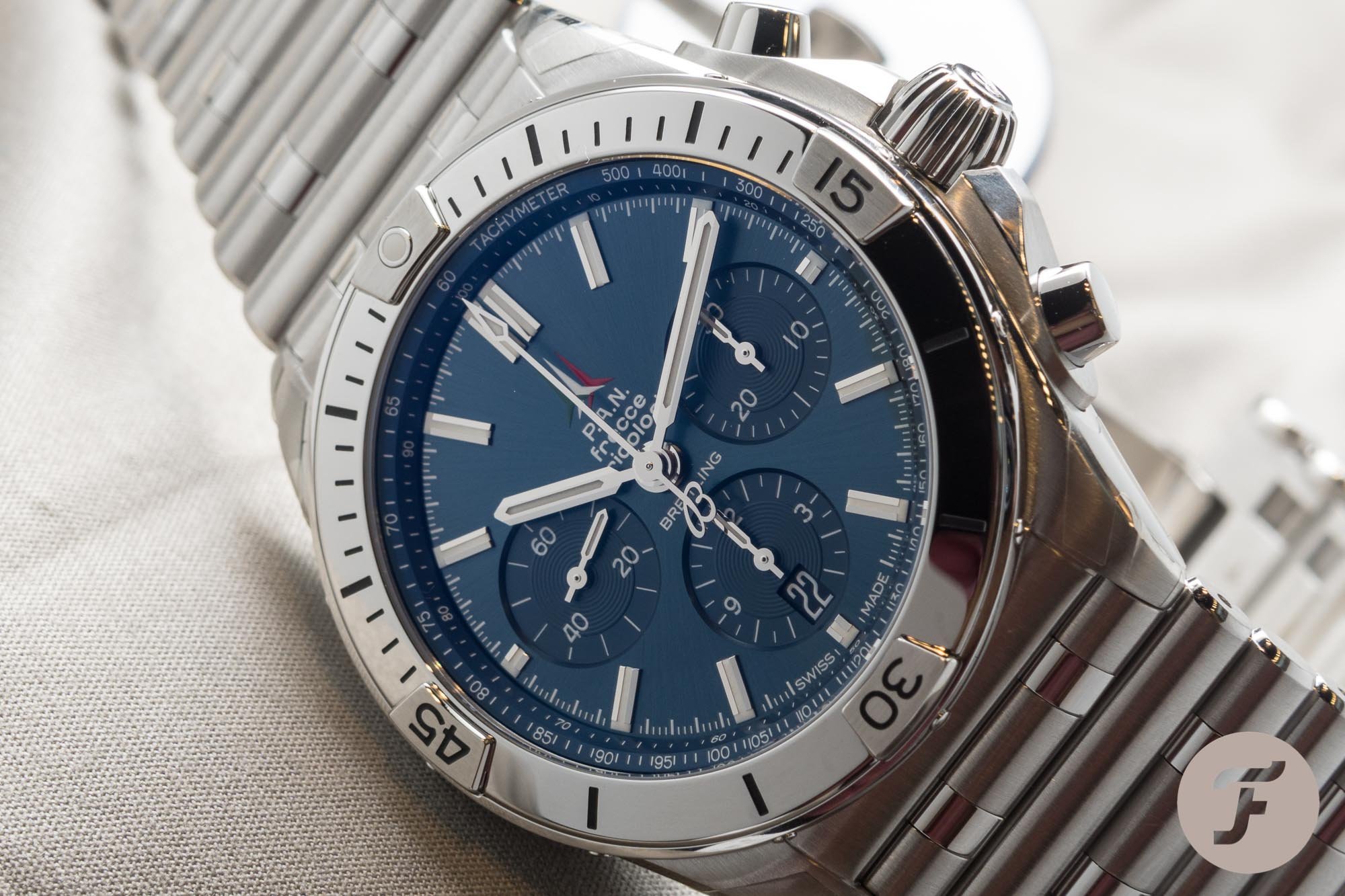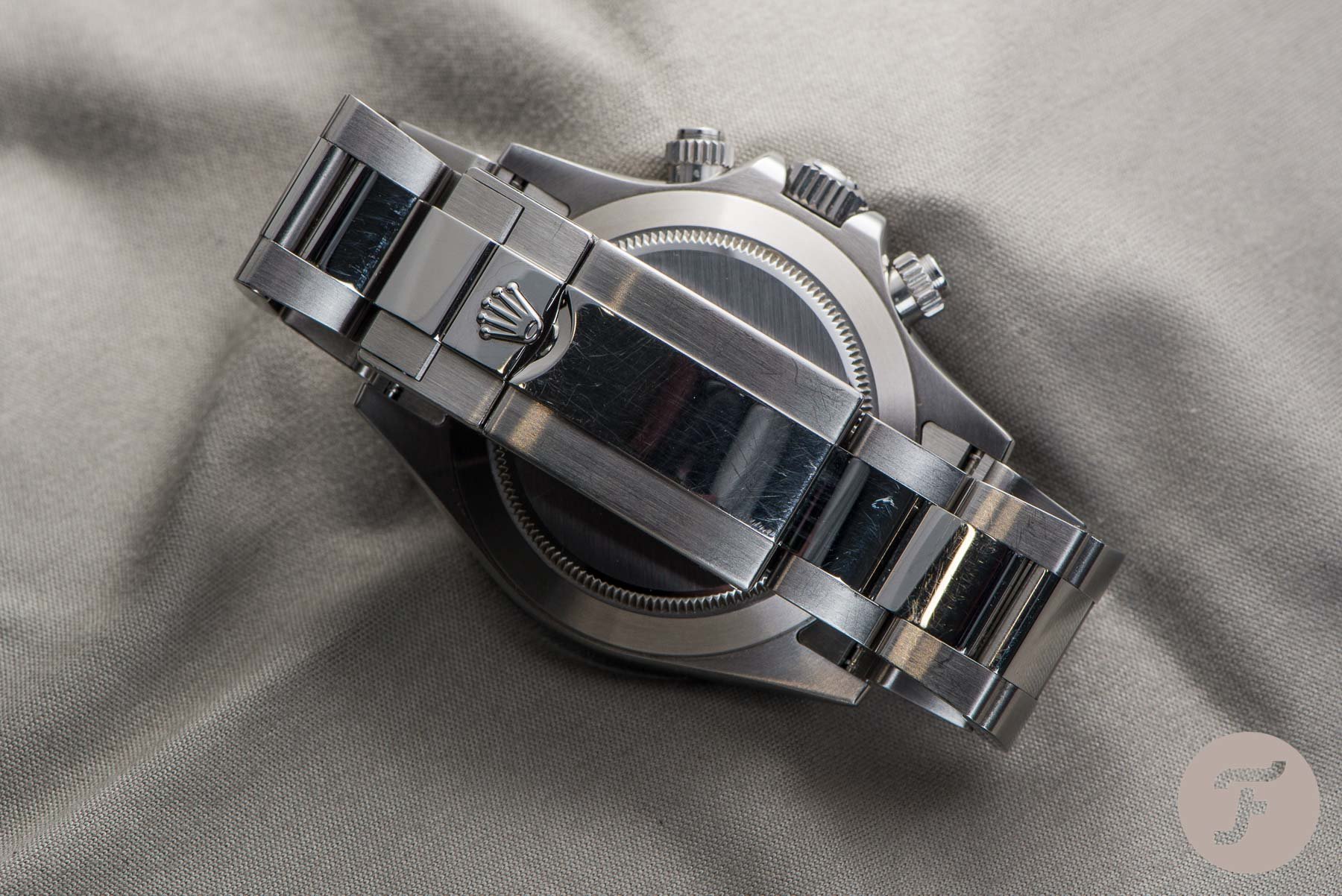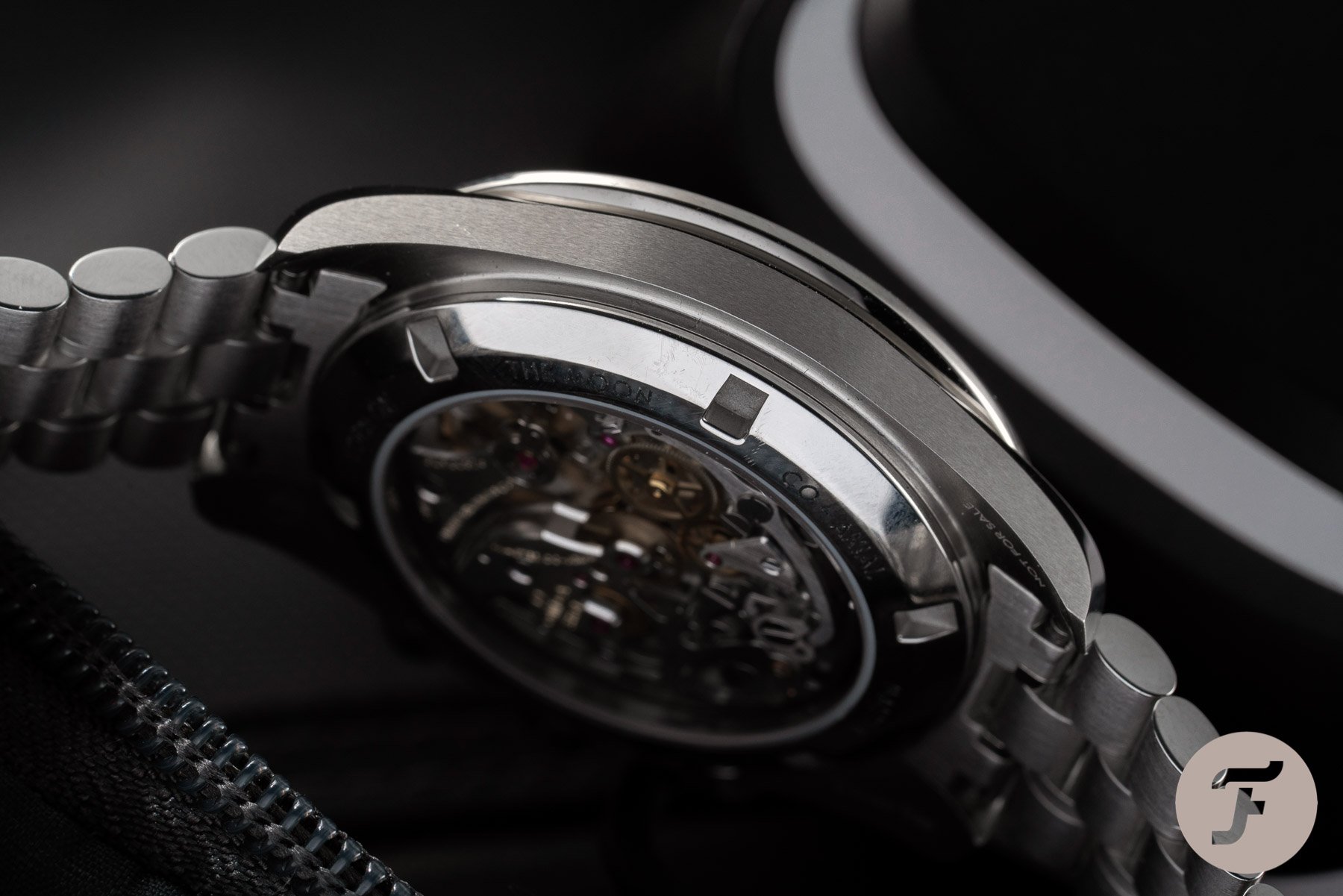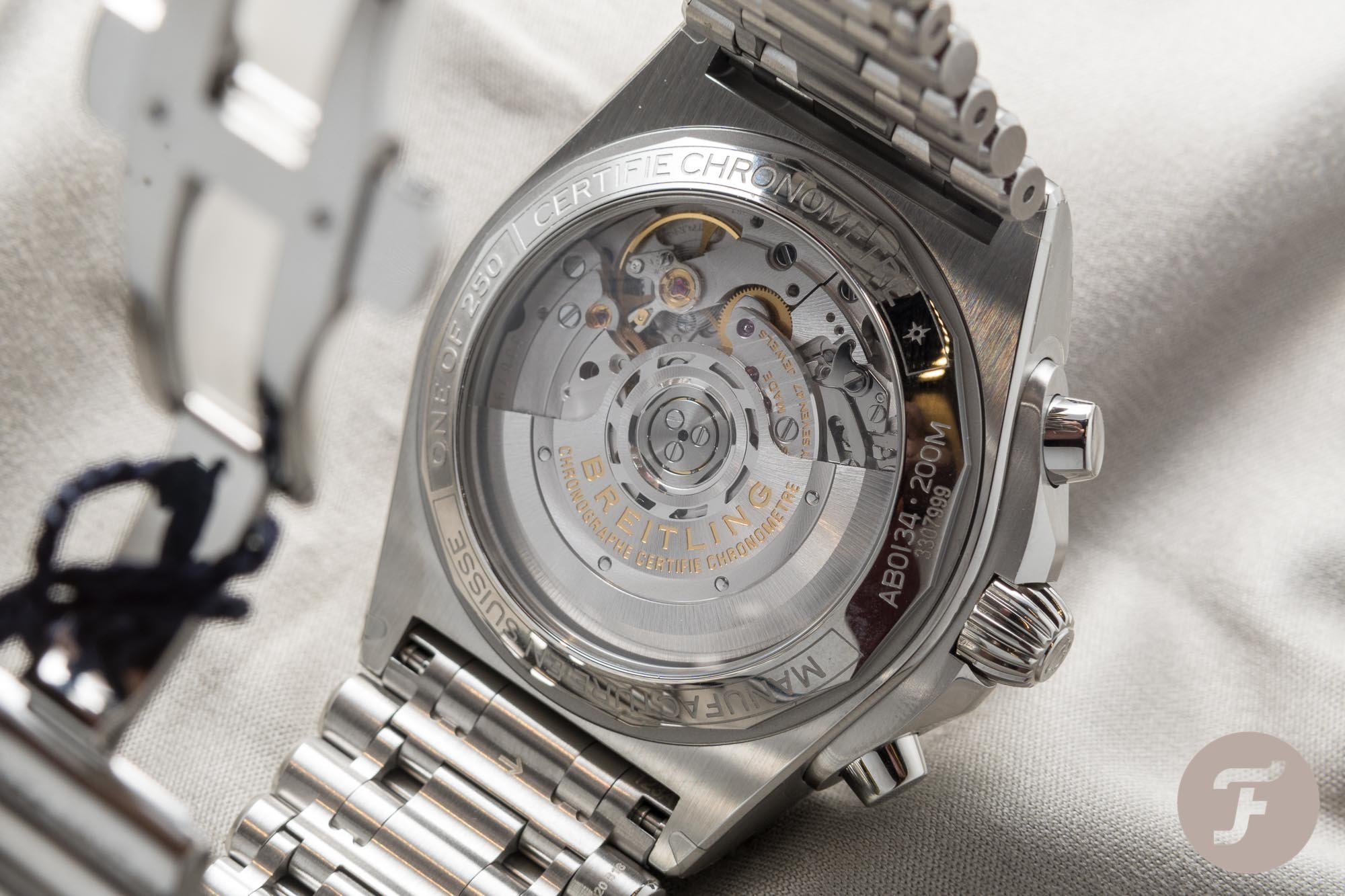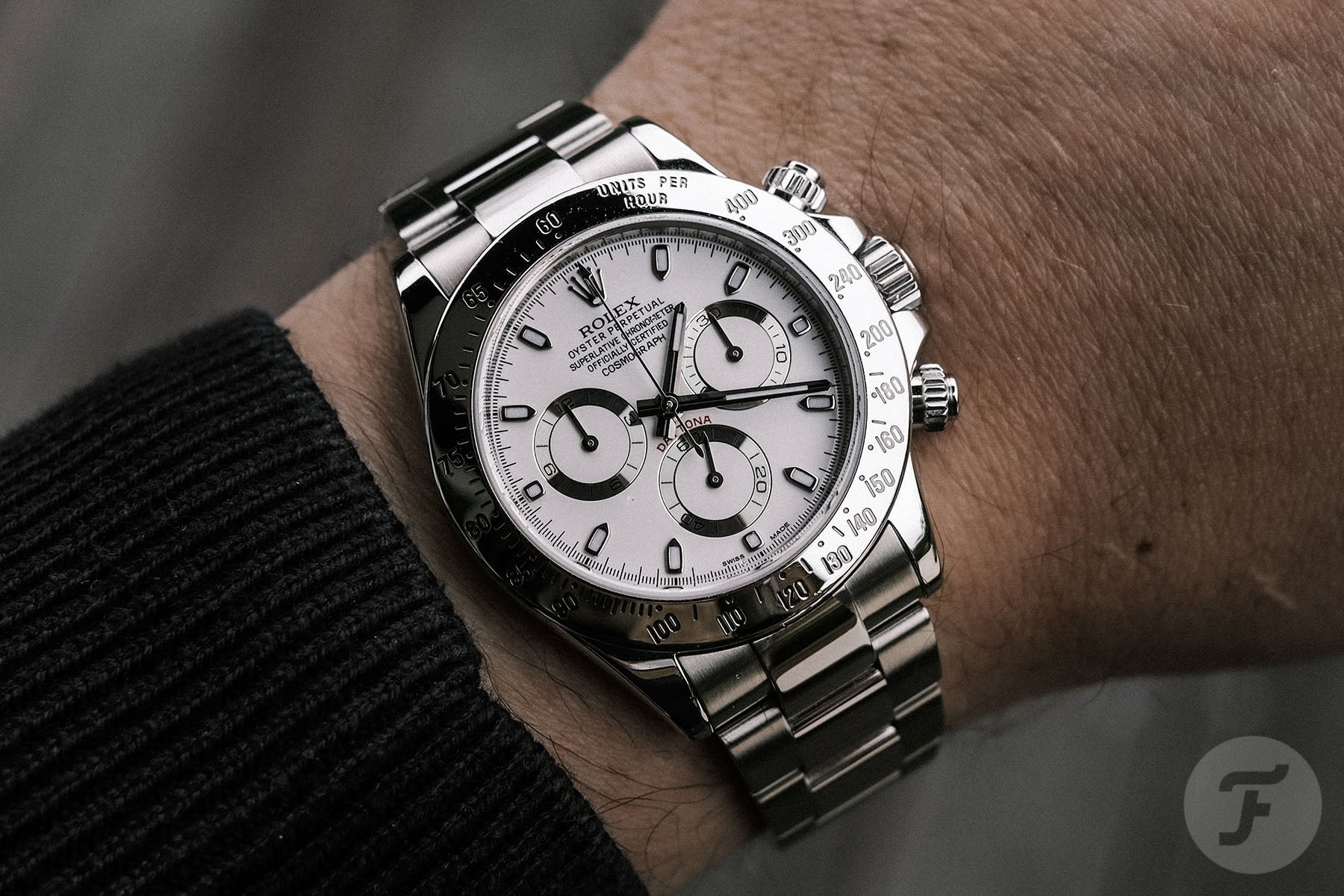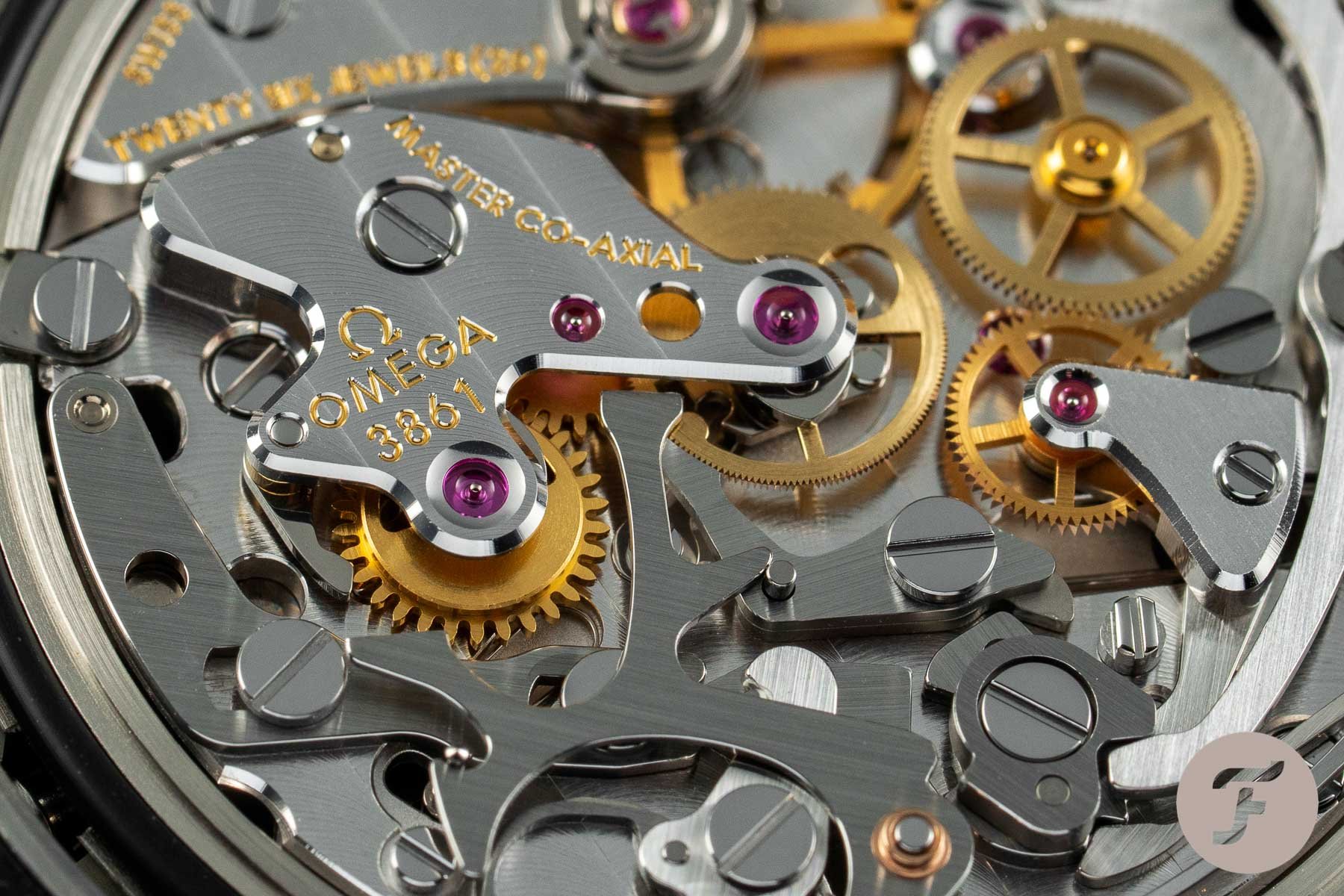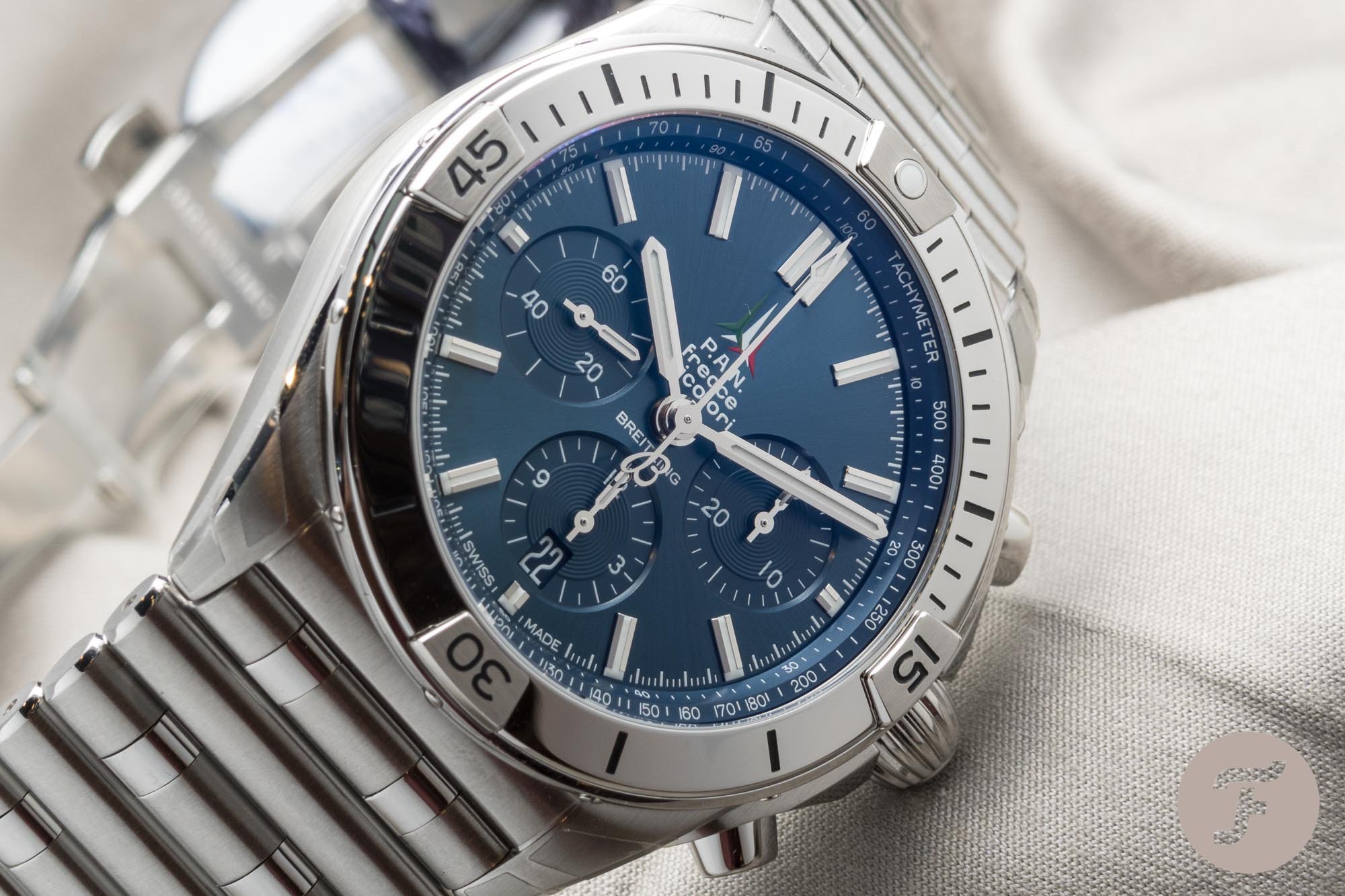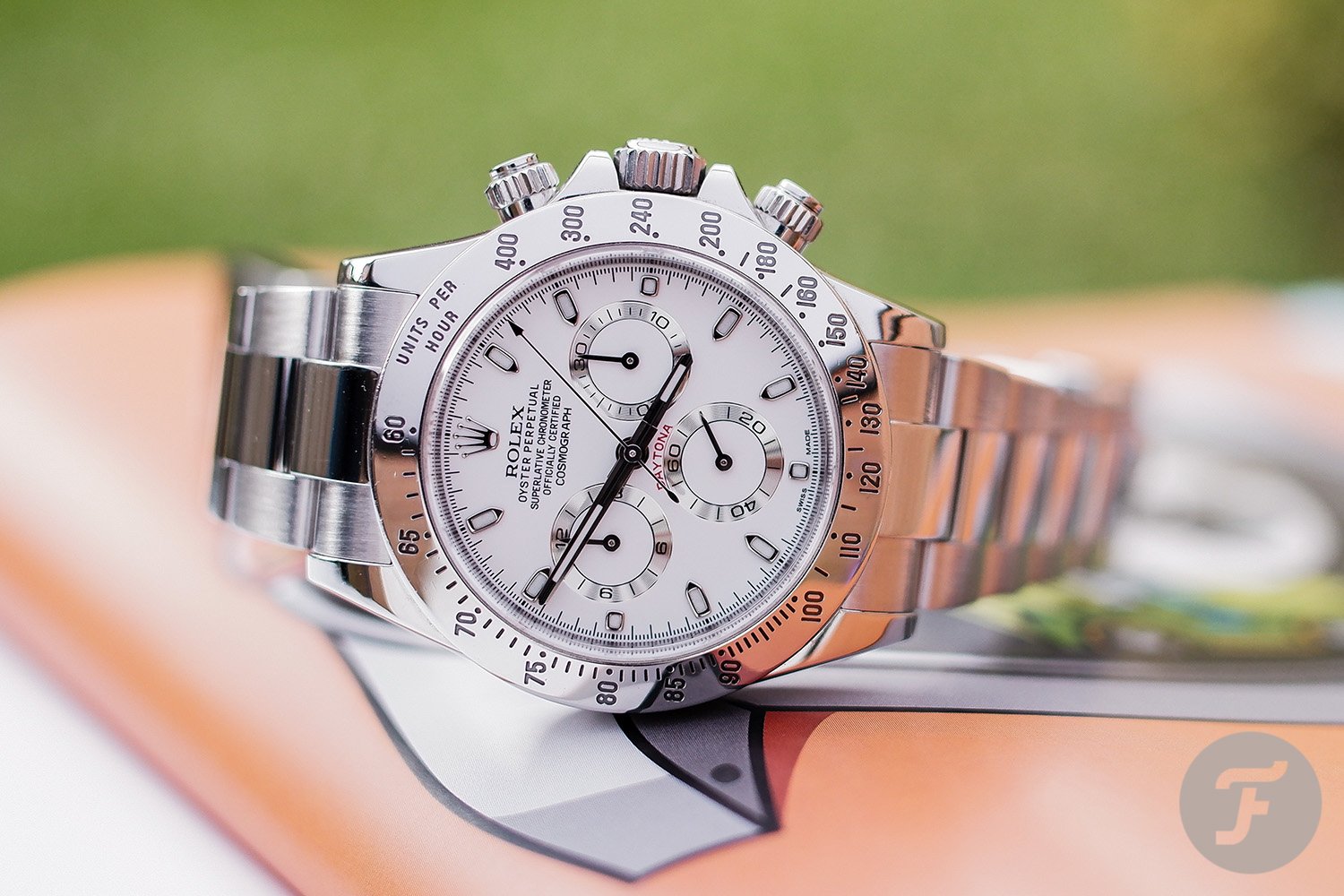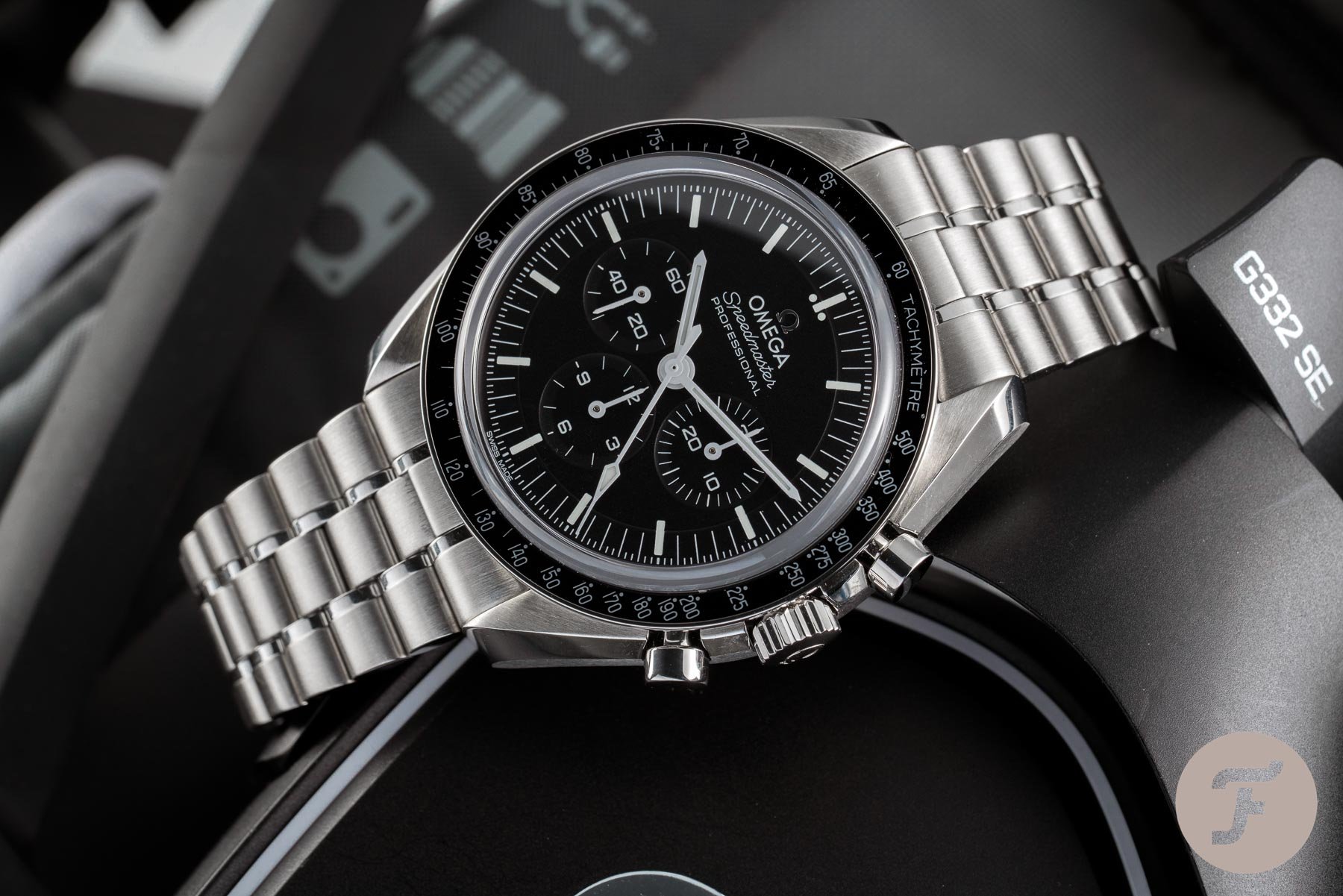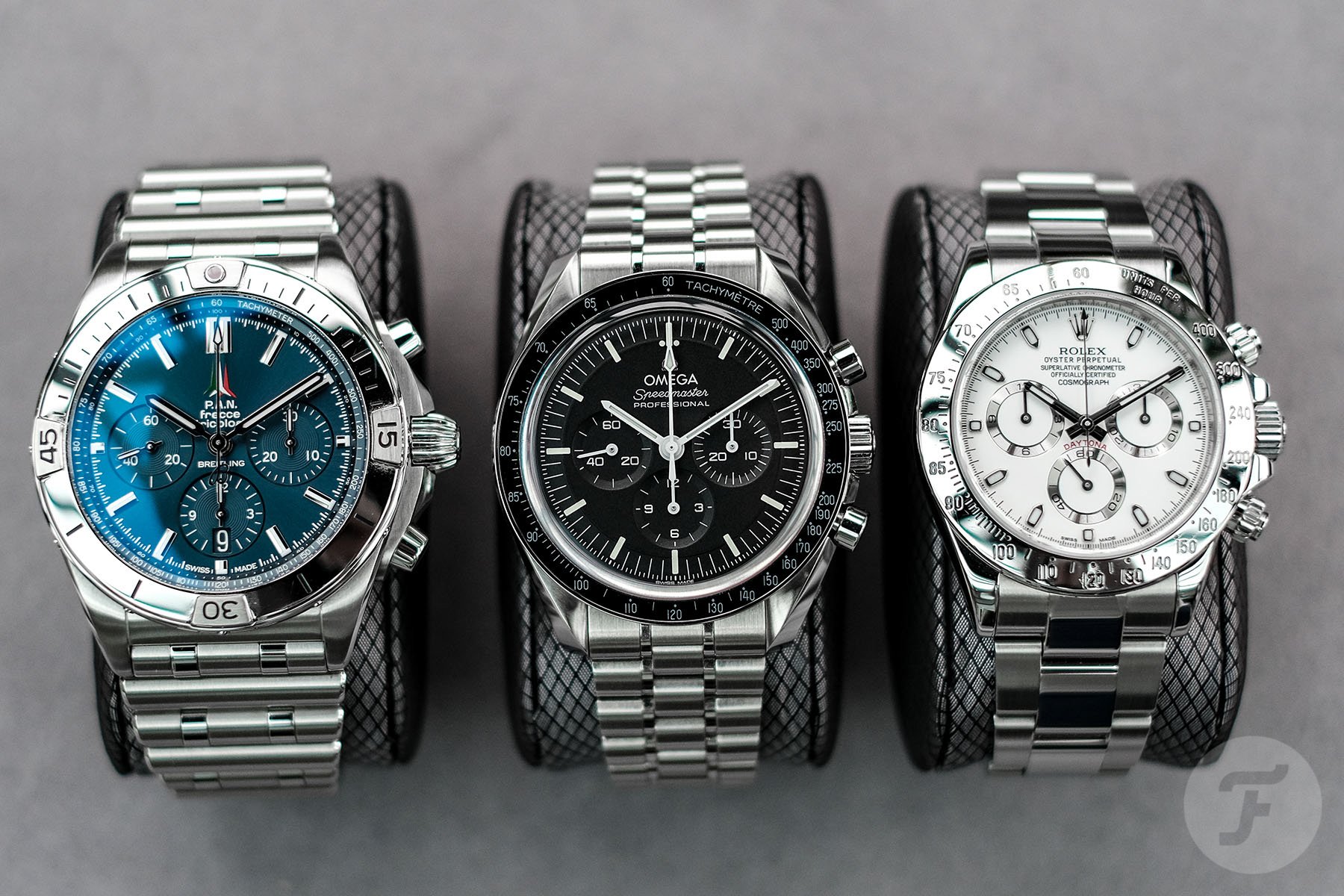Ranking A Trio Of Iconic Chronograph Watches From Rolex, Omega, And Breitling — A Buyer’s Guide From An Owner’s Experience
Like choosing a favorite offspring, ranking my chronograph collection is a tough call. In reality, I regularly cycle between my Breitling Chronomat, Omega Speedmaster, and Rolex Daytona. Any one of these chronographs suits a particular mood or event. But that’s not useful for budding buyers looking to purchase their first and perhaps last great watch. For you, I present an objective and subjective ranking of these iconic chronographs based on personal experience. At the end is the score determined purely from their position in each category. And, as we are all hooked on the Winter Olympics, which watch do you think will take home the gold medal?
For more detail, the watches in question are the Breitling Chronomat B01 42 “Frecce Tricolori” limited edition from 2020, the Omega Speedmaster Moonwatch from 2021, and the Rolex Cosmograph Daytona from 2014. While the Daytona is not the latest reference, unlike the other two, at least it’s also stainless steel with a matching bracelet. In my mind, these are some of the most iconic modern chronographs on the market today. For Breitling, you could argue the Navitimer is the bigger tent pole in its eclectic catalog. But the Chronomat has particular importance to signal its resurgence following the passing of Willy Breitling.
Il Triello
More details will be divulged on each watch through the ranking system. But just what is the process to rank each watch category? I’m using inspiration from the 2021 Formula One season for a fair comparison — namely, the sprint qualifying session that determines the grid for the main event. In tandem, the top three finishers in the sprint are rewarded with points based on their position. The first place receives three points, the second gets two, and the third place gets a single point. To rank today’s chronographs, I am using the same system, then I will tally the results at the end. That way, I am not granting arbitrary scores out of ten, but instead, letting the results speak for themselves.
The categories are intentionally vague so as not to favor any particular watch or brand. For instance, you won’t find “the best watch that went to space” or “most satisfying bezel click.” To make it fair, I selected a set of measures that any watch buyer may use to seek out a new chronograph. These are:
- Legibility
- Wearability
- Water resistance
- Movement
- Price
- Bragging rights
So with the rules in place and the criteria set, let’s see which watch comes out on top. And if you want, play along in the comments and determine your champion.
Legibility
Starting with the most obvious yet overlooked category for assessing a watch — its ability to display the time. How can it be that a watch’s primary function is relegated to the footnotes of a brand’s PR release? That’s an aside, but it should be first and foremost to me. I say that, but one of my watches in this competition is renowned for being unreadable. The Daytona, especially with the white dial, has a reputation for time-telling as an afterthought. That’s a little unfair, and I’ve not found it to be impossible to locate the hour and minute hands at a glance. But I will admit, it takes a little longer than most watches. I think I put it down to the combination of polished steel elements with a clinical white dial that offers very little contrast.
The Breitling Chronomat is very similar in this regard, but with an expansive blue dial and large lume plots, the indications appear more distinct. But if the headline image is anything to go by, the Omega Speedmaster is the clear (drum sting) winner — but why is that? The matte black dial with matte white hands and painted markers gives the Speedy its trademark contrast. Beyond that, it’s also the spacing Omega allows for the stepped sub-dials to breathe without impeding the central hands. Vice versa, you can easily read the stopwatch independently of the current time. For the caliber 3861 update in 2021, the number of dashes between the minute markings now aligns with the frequency of the caliber.
- Omega Speedmaster — 3pts
- Breitling Chronomat — 2pts
- Rolex Daytona — 1pt
Wearability
Wearability is perhaps more subjective than legibility, as it depends on your wrist size and shape. And it’s worth trying the watches on because, frankly, manufacturers lie on the spec sheets. Rolex states the Daytona is 40mm when it’s 38.5mm max. To its credit, the Speedy is precisely 42mm with the crown guards but wears smaller as the bezel dimensions are only 40mm. The Chronomat’s full name is the Chronomat B01 42, so you’d think 42mm was an accurate measurement. Which it is, but only if you measure across the bezel without the screws. Including the crown guards, the diameter of the Breitling is more like 46mm — the complete opposite method of measuring the diameter on the Omega.
So, if I can’t trust the specifications, how do I rate the wearability? I mean, all of these watches are sized for my wrist and wear brilliantly for me, but I’d say adaptability is a crucial factor. The Rolex Daytona’s Oyster bracelet is supremely pliable and has the Easylink extension for extra comfort on hot or active days. The Speedmaster’s new reference-1479-inspired bracelet only has two holes on the clasp to adjust the size without removing links. Possibly the least adaptable is the Chronomat, with its rifle-shell-style bracelet links and butterfly clasp. The Breitling cannot perform on-the-fly adjustment as only by removing the links can you modify the length. That doesn’t mean the Breitling is uncomfortable, only that it’s more hit-or-miss if the Chronomat is suitable for your wrist or not.
- Rolex Daytona — 3pts
- Omega Speedmaster — 2pts
- Breitling Chronomat — 1pt
Water resistance
Now for a far simpler category — water resistance. In the case of the Chronomat, it even prints the “200M” depth rating on the case-back. Looking at the specifications, the Daytona has 100 meters, and the Speedy has 50. Great, job done, next category. Hold fire, let’s look into this in a bit more detail. Firstly, none of my chronographs have been submerged in a body of water for a significant amount of time. The Breitling and Rolex occasionally accompany me in the shower but are never subjected to any depths where pressure can force water past the seals. So does the water resistance have any practical benefit for this type of watch? Well, it’s always nice to know the watch can withstand a dip (or slip) in the pool. Or even some recreational diving with the Chronomat’s 60-minute bezel scale.
It must be said; these are the stated depths from the brands. These timepieces may be capable of going deeper. For instance, the previous Chronomat could reach 500M. In comparison, the latest model more than halves that to 200M. That could be down to the thinner case and sapphire case-back rather than a solid steel one. But it could also be model positioning in the brand’s lineup. For example, I’m aware the Seamaster Aqua Terra could exceed its namesake 150M by double. But that could infringe on the Seamaster Diver 300M’s status. With that in mind, the Speedmaster may manage a few extra meters. But if I’m hesitant to take the Speedy in the shower, I’m less likely to bring it poolside. However, that doesn’t stop Gerard from taking a few laps with his trusty Speedmaster.
- Breitling Chronomat — 3pts
- Rolex Daytona — 2pts
- Omega Speedmaster — 1pt
Movement
The movement is one of the more complex categories to place. Initially, I considered the accuracy and put them on the timegrapher, but this can vary between each wearer’s experience. All three timepieces comply with COSC chronometer certification at a minimum. This means that an uncased movement must remain within a tolerance of +6/-4 seconds per day for ten consecutive days. Omega takes it a step further with an independently adjudicated Master Chronometer certification by METAS. These tests are more stringent with a narrow window of variance set to +5/-0 seconds per day over ten days, but now fully cased. A gain of +5 is the more favorable deviation, as it’s better to be early for something than late. Rolex also has its in-house Superlative Chronometer standards, which are even more strict at ±2 seconds per day.
But these stricter Superlative Chronometer tests did not come into effect until 2015, so my Daytona defaults to COSC standards (despite saying “Superlative Chronometer” on the dial). However, each of these chronographs keeps time admirably in the real world. Another way to judge the movement is finishing. Well, it is for the Speedy and Chronomat with exhibition windows, but less so for the Daytona with its solid steel case back. I assume it all looks nice in there, but I’m too scared to remove the case back myself. What about manufacturing provenance? Breitling’s Caliber B01 went through a lengthy and expensive development from the turn of the millennium until first powering the Chronomat in 2009. The vertical clutch layout is similar to the Rolex Daytona’s manufacture 4130 caliber that came to light in 2000.
Internal turmoil
The slight outlier is the Omega Speedmaster caliber 3861 that began life as a Lemania 1873 movement in the ’60s. This is perhaps the only movement you wouldn’t consider “in-house.” Although, each component has been fettled through the decades, including the Co-Axial escapement last year. The 3861 might as well be Omega’s own, primarily as ETA (owned by Swatch Group) produce it exclusively for Omega. In terms of complications, only the Breitling has the date at 6 o’clock, but they all count up to 12 hours of elapsed time and feature a 30-minute totalizer.
You can almost sense the internal turmoil of my brain trying to judge these movements apart. The Daytona and Chronomat have around 70 hours of power reserve and an automatic winding rotor. Yet, the Speedy is slightly less with 50 hours of continuous running and is manually wound. That said, the Speedy is super satisfying to wind with a mechanical click, which is more muted in the Daytona and more “sandy” in the Chronomat. In other interactions, the actuation of the chronograph pushers in each watch has a reassuring tactile resistance you’d expect at this price. As soon as one of the calibers breaks down, I may change my score, but I am using the practicality of each movement as the differentiator — but maybe the Naked Watchmaker would be a better judge in the future.
- Breitling Chronomat — 3pts
- Rolex Daytona — 2pts
- Omega Speedmaster — 1pt
Price
Thank God the movement category is over. Now we’re down to a purely objective measure — the price. I paid $11,400 for the Daytona in 2014, $8,250 for the Chronomat, and $7,150 for the Speedmaster — in that order. Boy, putting the costs together like that is a tad eye-watering. So, therefore, the Speedy is the best value for money, right? Actually, yes, it is. Even with the price hike last year for the 3861-powered model, the Speedmaster is a lot of watch for the money. But that’s only part of the equation. According to Chrono24 (at the time of writing), the Daytona is worth $33,898, a 197% ROI. The Chronomat drops to $8,101, and the Speedmaster is $6,926. They’re not exactly investment pieces, but they’re also not dropping like stones.
As none of these watches are up for sale, value retention is not entirely a factor for me. But I know many buyers don’t want to lose too much when reselling. It’s been said before, but buying a steel Rolex is akin to doubling your money seconds after leaving the store. With prospects like that, purchasing any Rolex has become an art form and unfortunately has attracted less-than-salient investors in the game. The steel Daytona is possibly the most widely demanded watch globally, too. So, although it’s good news for owners, buyers lose out immeasurably. Even so, taking value retention and value for money in tandem, here are my podium places.
- Omega Speedmaster — 3pts
- Rolex Daytona — 2pts
- Breitling Chronomat — 1pt
Bragging rights
Bragability may not be a word, but somehow, we all recognize the meaning behind it. To many watch fans, you might be rolling your eyes at the thought of a watch used to brag about wealth or status. For you guys, you can treat this section as a low priority and can even re-rank the watches to omit this last category. But for those looking to buy one great watch and be set for life, this might be a critical factor in purchasing. Essentially, it’s how the watch is perceived amongst peers. No one wants to attract unwanted attention. But surrounded by fellow watch nerds and friends, it’s nice to receive fascination about particular watches in your collection.
From frequenting watch meet-ups in my area, without a doubt, the Daytona gets the most attention. I’m judging that on the questions I receive and others wanting to try it on. The Speedmaster is relatively ubiquitous, but it gets a knowing nod from passers-by on public transport. In a close-knit group, the Chronomat receives a lot of love, but less so on social media platforms. Possibly due to Breitling’s early-2000s “big, brash, and blingy” history, the Chronomat hasn’t become the “Instagram darling” that the Speedy and Daytona have. Jorg demonstrated this in his brilliant round-up of best Breitling watches of the 2000s — coming up with five was a real struggle. But the new design is far more subdued and is only two years old, so perhaps, it needs more time for appreciation. But considering the here and now, these are my scores.
- Rolex Daytona — 3pts
- Omega Speedmaster — 2pts
- Breitling Chronomat — 1pt
Results and summary
The scores are in, and with the help of Excel, I have the final results:
- Gold medal: Rolex Daytona — 13pts
- Silver medal: Omega Speedmaster — 12pts
- Bronze medal: Breitling Chronomat — 11pts
It was a very close battle, and at no point was I mentally calculating the winner as I was divvying out the scores. The Rolex Daytona is ranked number one in my chronograph collection. But I suppose I didn’t incorporate heritage into these scores. If I had, in my mind, the Speedmaster is a triumph of design and has been since its conception in 1957. This is not only in the realm of watches but in all forms of design and industry. But this is about a single watch, not the path laid before it. And according to me, the Daytona comes out on top.
Do you agree with these results? Are there categories I could’ve considered for judging these chronographs? Let me know your answer and other potential iconic chronograph candidates in the comments.

